7 Popular Fish You Should Try in a 20-Gallon Aquarium
20-gallon aquariums are one of the most popular tank sizes among fish keepers because they’re small enough to keep in a bedroom but big enough that you can choose from a wide variety of fish to keep. With all these possibilities, check out our favorite freshwater fish to spice up your aquarium with their beautiful colors and interesting behaviors.
7. Julidochromis
This stunning, three-inch fish is the perfect choice if you’ve ever wanted to try keeping Tanganyikan cichlids. They have the amazing ability to swim vertically, sideways, and upside-down in order to stay close to surfaces and hiding spots. Provide them with lots of rockwork to simulate their natural habitat, and they’ll feel right at home. Depending on the amount of cover provided, you can keep three to six of them in a 20-gallon long tank or maybe a single breeding pair in a 20-gallon high tank. Compared to other African cichlids, Julies are relatively peaceful fish and can cohabitate with other small community fish that prefer swimming in the middle or top of the tank.
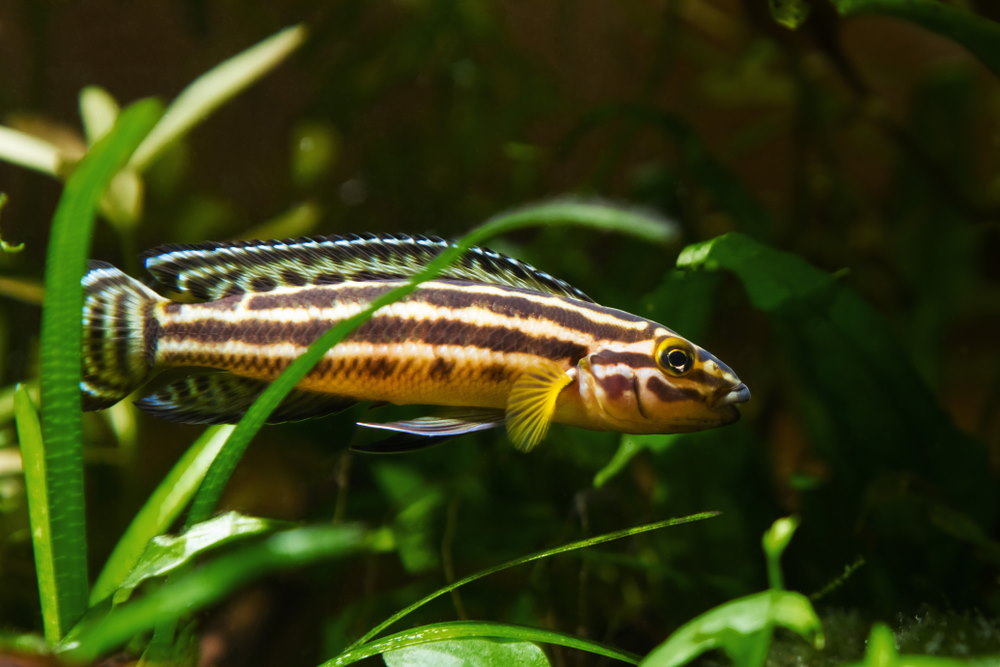
Julidochromis ornatus (or the golden Julie) is one of the most popular varieties because of its colorful markings and small size.
6. Leopard Danio
Looking for a hyper, interactive fish that isn’t afraid to say hello? Check out the leopard danio! This brightly spotted schooling fish looks like a little trout and comes in both short and long fin varieties. The great thing about these danios is how resilient they are – they can live at room temperature without a heater and are happy in a wide range of pH and water hardness. Get a group of six, and watch them speed around the top third of the fish tank. To prevent them from hogging all the food, pair them with other fast, midwater fish like tetras and rasboras for a highly entertaining aquarium.
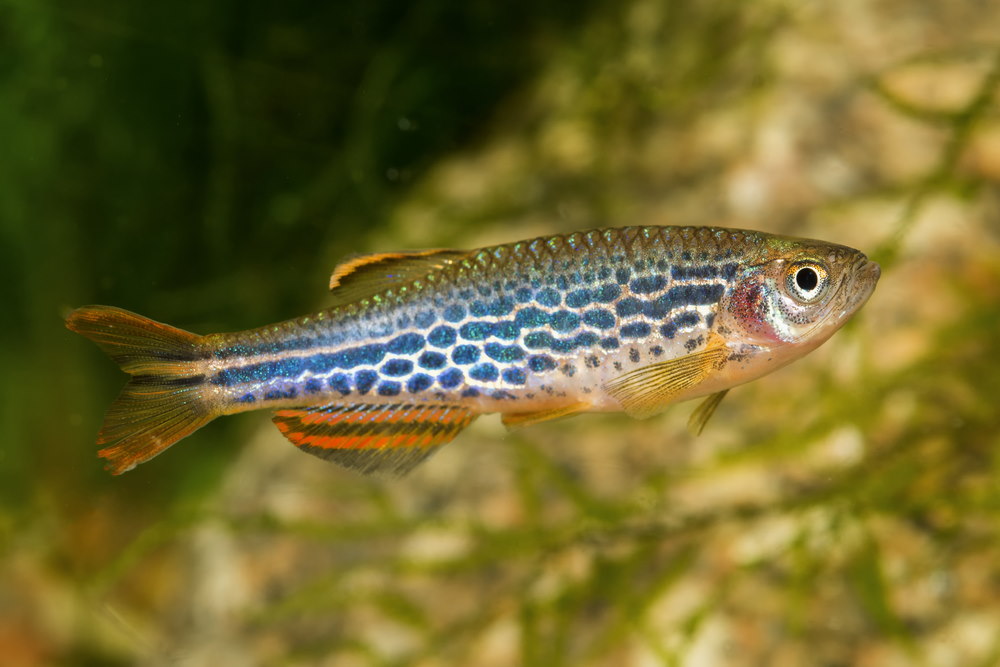
Leopard danios are an easy, budget-friendly schooling fish that aren’t as commonly seen as their famous cousin, the zebra danio.
5. German Blue Ram
Speaking of boldly patterned fish, take a look at the German blue ram, or Mikrogeophagus ramirezi. A 20-gallon aquarium can house one male with one or two females for company. A female has a shorter dorsal fin, pinkish belly, and blue spangles inside the black spot on the side of her body. A male, on the other hand, is larger, has an extended dorsal ray, and no blue spangles inside his black spot. The key thing to remember is that this South American dwarf cichlid likes higher temperatures around 85°F, so keep them with other hot water fish like cardinal tetras and Sterbai cory catfish.
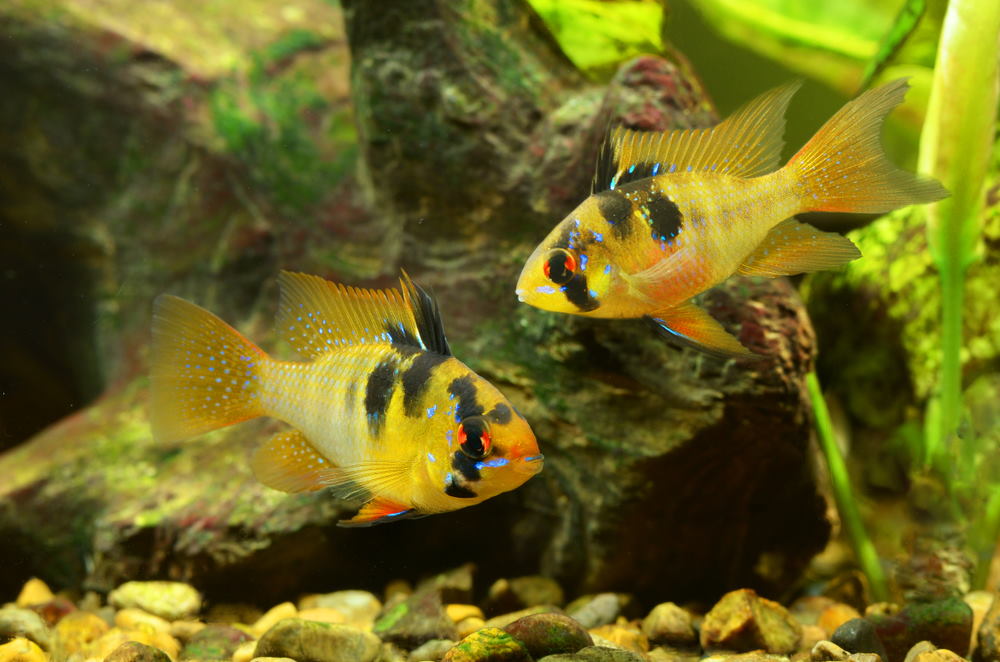
German blue rams form monogamous pairs that show parental care over their young. In this picture, the male is on the left, and the female is on the right.
4. Harlequin Rasbora
Trigonostigma heteromorpha is another popular schooling fish that does great in a group of six to eight. Their distinctive black triangular patch and bright orange coloration really stand out in a lushly planted tank. Growing to only two inches long, this hardy, beginner-friendly fish will do well in a community tank with other docile inhabitants. For more information on caring for rasboras, read our full care guide.
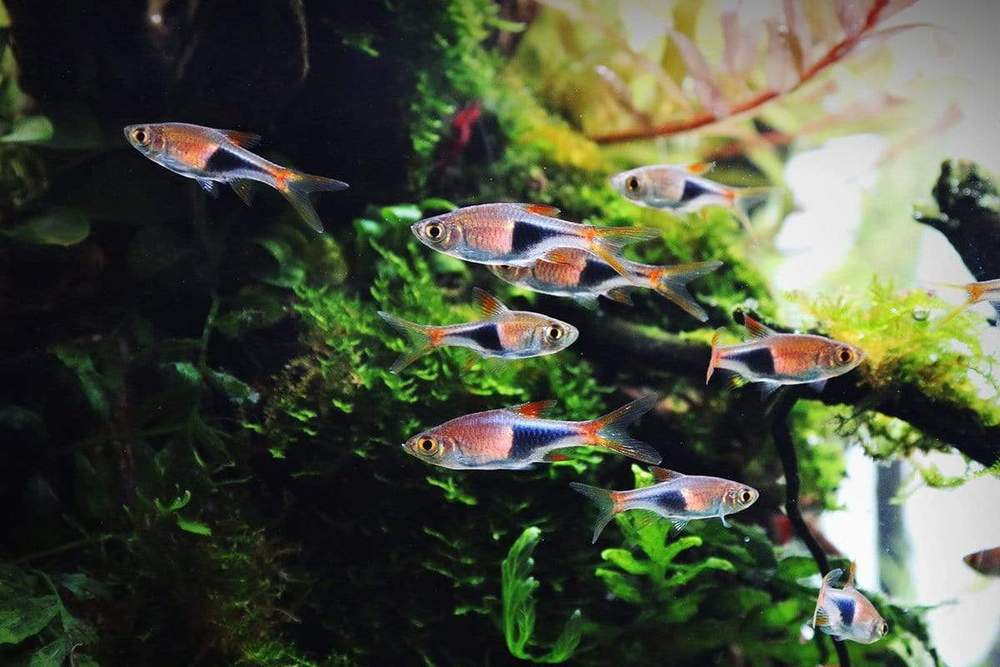
Harlequin rasboras are social creatures that tend to swim in the middle to top sections of an aquarium.
3. Apistogramma
Apistogramma cacatuoides and Apistogramma agassizii are two of the most popular members of this large genus of South American dwarf cichlids. Much like the German blue ram, Apistos are very colorful, like to hang out in the bottom third of a tank, and prefer warmer temperatures around 82°F. If you provide breeding caves, the female will pair up with her chosen male, protect her eggs, and care for the young. Help her out by offering baby brine shrimp as fry food and keeping the water quality as clean as possible. Learn more about them in our Apistogramma care guide.

This male Apistogramma cacatuoides has long, brightly colored dorsal fins, whereas his female counterpart is smaller in size and turns yellow during spawning.
2. Panda Corydoras
Unlike larger species of cory catfish, Corydoras panda only grows to 1.75 to 2 inches long, so you can easily get a group of six or more for a 20-gallon aquarium. This peaceful bottom dweller can be kept in cooler temperatures from 72 to 77°F. They use the barbels or whiskers around their mouth to scavenge for their favorite foods, such as frozen bloodworms and Repashy gel food. Keep them happy and well-fed, and soon you may see some breeding behavior and sticky eggs covering the tank walls. For more details, read our cory catfish care guide.
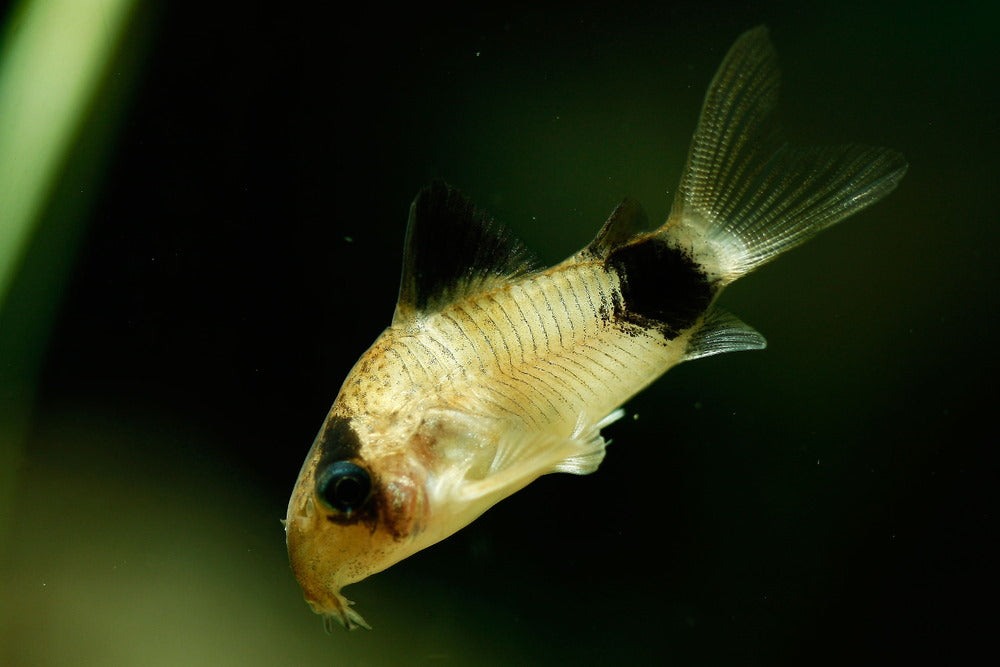
Panda cory catfish are a crowd favorite because of their unique black and white coloration.
1. Pseudomugil gertrudae
This smaller rainbowfish is known for its piercing blue eyes, bright yellow body, and spotted finnage. If you get a group of six or more with both genders, the males will compete for attention by displaying their beautiful fins in a showy dance. We chose the spotted blue-eye rainbowfish as our number one pick because of their colorful appearance, interesting behavior, and uniqueness in the hobby. Depending on where you live, they usually command a higher price and may be a little hard to find, but put them in a planted tank or in front of a black aquarium background and they’ll take your breath away.
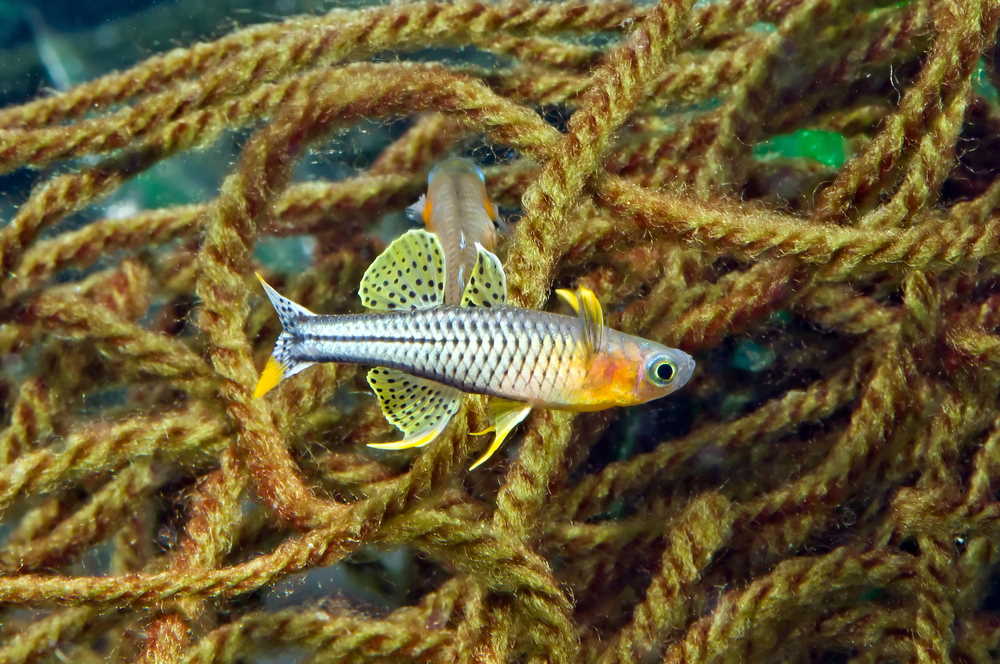
You can use spawning mops made out of yarn to encourage the rainbowfish to lay their eggs, and then remove the mop to raise the fry in a separate tank.
If you enjoy articles like this, don’t forget to sign up for our newsletter to receive a weekly email with a summary of all our latest blog posts, videos, and live streams!




